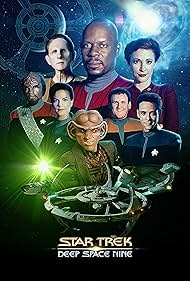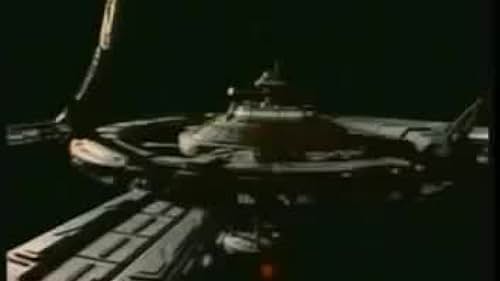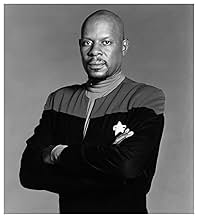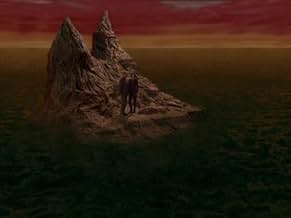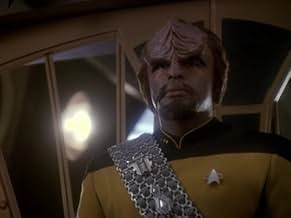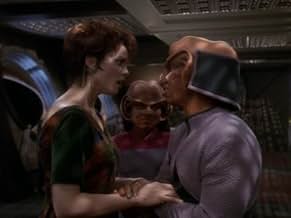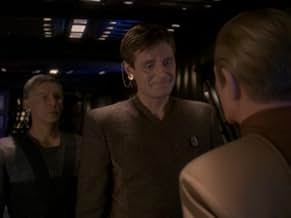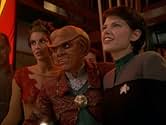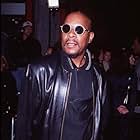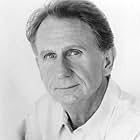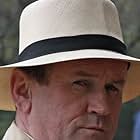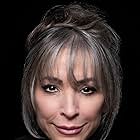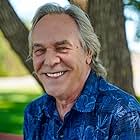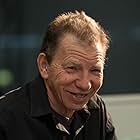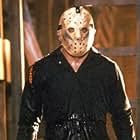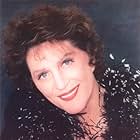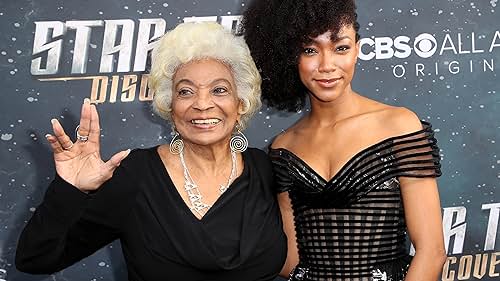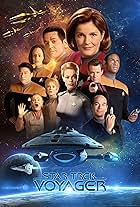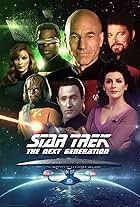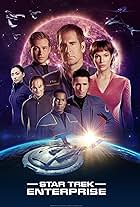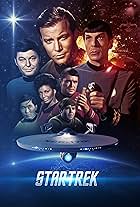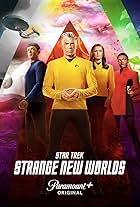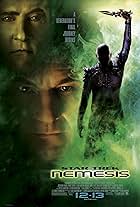Nelle vicinanze del pianeta liberato di Bajor, la stazione spaziale della Federazione Deep Space Nine custodisce l'apertura di un tunnel spaziale stabile sul lato più lontano della galassia.Nelle vicinanze del pianeta liberato di Bajor, la stazione spaziale della Federazione Deep Space Nine custodisce l'apertura di un tunnel spaziale stabile sul lato più lontano della galassia.Nelle vicinanze del pianeta liberato di Bajor, la stazione spaziale della Federazione Deep Space Nine custodisce l'apertura di un tunnel spaziale stabile sul lato più lontano della galassia.
- Vincitore di 4 Primetime Emmy
- 59 vittorie e 116 candidature totali
Sfoglia gli episodi
Stellar Photos From the "Star Trek" TV Universe
Stellar Photos From the "Star Trek" TV Universe
We've rounded up some of our favorite photos from across the "Star Trek" TV universe. Take a look at memorable moments from red carpet premieres and classic episodes.
Trama
Lo sapevi?
- QuizKira was a last-minute addition to the cast. The original plan was to include the Star Trek: The Next Generation (1987) character of Ro Laren, but Michelle Forbes didn't want to do a series at the time.
- BlooperIn the first three seasons, CDR Sisko refers to his father in the past tense, even talking about his slow demise and death from some unknown ailment. But starting in the fourth season ("Homefront"), Joseph Sisko is alive and well running a restaurant in New Orleans. Joseph appears in a total of six episodes throughout the last 4 seasons.
- Curiosità sui creditiThe opening credits for "Emissary" lacked the wormhole opening that all future episodes featured. Starting with Season 4, the opening credits included additional spacecraft and activity around the station, including the Defiant flying into the wormhole.
- Versioni alternativeSeveral episodes were originally shown as 2-hour movies. They were later edited into two-part 60 minute episodes for later airings.
- ConnessioniEdited into Star Trek: Voyager: Unity (1997)
- Colonne sonoreStar Trek: Deep Space Nine - Main Title
Written by Dennis McCarthy
Recensione in evidenza
I remember reading in a plane that there was going to be a new Star Trek Series based on a space station to premiere in January 1993. I had always found the idea of Star Trek very appealing and enjoyed a few movies and original episodes now and then. At that time, I had never really got into The Next Generation which my family and friends seemed to love, but I figured I would at least give this new show a try. As I eventually sat there with my little brother and watched the two-hour pilot, little did I know that this would change my life for the next seven years, as I would have to plan my weekends so that I could catch every new episodes on Saturday nights like football fans' semi-sacred Sunday afternoons.
So why did I fall in love with the show? Why indeed do we fall in love? Well, there is always a part of the answer linked to resonance; something that stirs something strong and positive within you. The show is a whole package of powerful television and one of the best gifts I ever bough myself was the complete seven seasons in DVD. Now, besides the intangible, the 'magic' that comes from many elements like the beautiful mind that arises from firing neurons, here is why this television series is not only a great science-fiction experience, but ranks among the best television series of all time in my humble opinion.
A) The Characters
At the base of it all, the show's strength is with its interesting, conflicted and complex characters. Both the writers and actors bring life to characters that will invade your living room and your head, maybe your heart. The relationships they create on the busy space station are sure to keep you thinking, laughing or crying with them. They are very endearing and perfectly heroic and flawed. You get to know each and every one of them in a deep real-life-like layered way. You also get to see them progress and stay the same, throughout the journey.
Beyond the friendship-like familiarity that will awaken in you the characters of Odo, Quark, Jadzia, Worf, Ezri, Kira, Julian, Miles and the Siskos, the guest characters are developed in an astonishingly similar depth. Again the writers and actors pull their heart out to create the most memorable recurring characters that feel as much part of the show as the regulars. Garak, Dukat, Rom, Nog, Leeta, Vic, Martok, Gowron, Wynn and Weyoun— to name a few—are as complex as alien DNA. It is like having a basketball team with superstars on the bench to support the starting five when needed.
B) The Story
Set on a space station —and the major critic and setback for most Trekkers that prefer an exploring ship a la Enterprise—the story is far from static. In fact, with the Star Trek fashion of exploring current human questions and themes in this futuristic backdrop, DS9 will explore everything from religion, war, death, slavery, genetic engineering, homosexuality (first homosexual kiss on TV!), geniuses, heroes, rebels, politics, commerce, racism, multiple personalities, memories, continuity, resurrection, time, peace, love, parenthood, marriage, espionage, mass murders, prison, biological warfare, terrorism, to the military and martyrdom. All that and more is explored in a thoughtful, meaningful way and kudos to the show for not only exploring them, but for remaining in the interesting gray area. There is nothing black and white. Everything (and I mean everything) is questionable and an opportunity for thoughts and discussion.
The story is a balancing act between mundane nuances of life and epic goals, dreams and actions. If it is not a problem with Sisko's son at the space station school, it is the discovery of a new technology, the casual friendship of Miles and Julian, the encounter with a new race that may threaten the existence of the half the galaxy, Odo's existential crisis or the possible assassination of a prominent political or religious figure. All this is so well woven together and each has its importance in the smaller and grandeur scheme of things to make this fabricated Universe feel complete and utterly real and engaging.
C) The People
The writers, directors, cast and crew were without a doubt dedicated to make this thing work and it shows in the most obvious and subtle ways throughout the series. Actors will take the director chair on occasion to direct their colleagues or sit down with the writing team to discuss character development. Special effects, sets, costumes and make-up artists make crucial contributions to make the alien-filled universe seem believable. The passion that exists behind and in front of the camera is palpable and welcomed. You really feel that the whole production team has a common dream in bringing this labor of love to the viewer week after week. The consistent quality of the show over years (170+ episodes) from "Emissary" to "What You Leave Behind" is a testament to this desire to give more to the audience and create something to be proud of. Well, Ira et al, a sincere thank you and a hat-tipping bravo.
So why did I fall in love with the show? Why indeed do we fall in love? Well, there is always a part of the answer linked to resonance; something that stirs something strong and positive within you. The show is a whole package of powerful television and one of the best gifts I ever bough myself was the complete seven seasons in DVD. Now, besides the intangible, the 'magic' that comes from many elements like the beautiful mind that arises from firing neurons, here is why this television series is not only a great science-fiction experience, but ranks among the best television series of all time in my humble opinion.
A) The Characters
At the base of it all, the show's strength is with its interesting, conflicted and complex characters. Both the writers and actors bring life to characters that will invade your living room and your head, maybe your heart. The relationships they create on the busy space station are sure to keep you thinking, laughing or crying with them. They are very endearing and perfectly heroic and flawed. You get to know each and every one of them in a deep real-life-like layered way. You also get to see them progress and stay the same, throughout the journey.
Beyond the friendship-like familiarity that will awaken in you the characters of Odo, Quark, Jadzia, Worf, Ezri, Kira, Julian, Miles and the Siskos, the guest characters are developed in an astonishingly similar depth. Again the writers and actors pull their heart out to create the most memorable recurring characters that feel as much part of the show as the regulars. Garak, Dukat, Rom, Nog, Leeta, Vic, Martok, Gowron, Wynn and Weyoun— to name a few—are as complex as alien DNA. It is like having a basketball team with superstars on the bench to support the starting five when needed.
B) The Story
Set on a space station —and the major critic and setback for most Trekkers that prefer an exploring ship a la Enterprise—the story is far from static. In fact, with the Star Trek fashion of exploring current human questions and themes in this futuristic backdrop, DS9 will explore everything from religion, war, death, slavery, genetic engineering, homosexuality (first homosexual kiss on TV!), geniuses, heroes, rebels, politics, commerce, racism, multiple personalities, memories, continuity, resurrection, time, peace, love, parenthood, marriage, espionage, mass murders, prison, biological warfare, terrorism, to the military and martyrdom. All that and more is explored in a thoughtful, meaningful way and kudos to the show for not only exploring them, but for remaining in the interesting gray area. There is nothing black and white. Everything (and I mean everything) is questionable and an opportunity for thoughts and discussion.
The story is a balancing act between mundane nuances of life and epic goals, dreams and actions. If it is not a problem with Sisko's son at the space station school, it is the discovery of a new technology, the casual friendship of Miles and Julian, the encounter with a new race that may threaten the existence of the half the galaxy, Odo's existential crisis or the possible assassination of a prominent political or religious figure. All this is so well woven together and each has its importance in the smaller and grandeur scheme of things to make this fabricated Universe feel complete and utterly real and engaging.
C) The People
The writers, directors, cast and crew were without a doubt dedicated to make this thing work and it shows in the most obvious and subtle ways throughout the series. Actors will take the director chair on occasion to direct their colleagues or sit down with the writing team to discuss character development. Special effects, sets, costumes and make-up artists make crucial contributions to make the alien-filled universe seem believable. The passion that exists behind and in front of the camera is palpable and welcomed. You really feel that the whole production team has a common dream in bringing this labor of love to the viewer week after week. The consistent quality of the show over years (170+ episodes) from "Emissary" to "What You Leave Behind" is a testament to this desire to give more to the audience and create something to be proud of. Well, Ira et al, a sincere thank you and a hat-tipping bravo.
- christian94
- 18 nov 2007
- Permalink
I più visti
Accedi per valutare e creare un elenco di titoli salvati per ottenere consigli personalizzati
Dettagli
- Data di uscita
- Paese di origine
- Siti ufficiali
- Lingue
- Celebre anche come
- Deep Space Nine
- Luoghi delle riprese
- Azienda produttrice
- Vedi altri crediti dell’azienda su IMDbPro
Contribuisci a questa pagina
Suggerisci una modifica o aggiungi i contenuti mancanti
